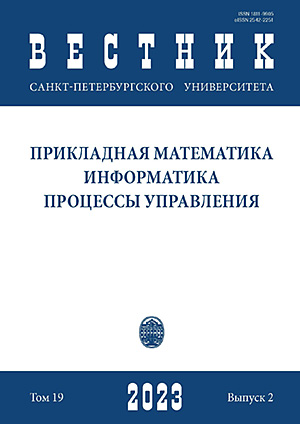The method of penalty functions in the analysis of optimal control problems of Navier — Stokes evolutionary systems with a spatial variable in a network-like domain
DOI:
https://doi.org/10.21638/11701/spbu10.2023.203Abstract
The article considers the Navier — Stokes evolutionary differential system used in the mathematical description of the evolutionary processes of transportation of various types of liquids through network or main pipelines. The Navier—Stokes system is considered in Sobolev spaces, the elements of which are functions with carriers on n-dimensional networklike domains. These domains are a totality of a finite number of mutually non-intersecting subdomains connected to each other by parts of the surfaces of their boundaries like a graph (in applications these are the places of branching of pipelines). Two main questions of analysis are discussed: the weak solvability of the initial boundary value problem of the Navier — Stokes system and the optimal control of this system. The main method of research of weak solutions is the semidigitization of the input system by a time variable, that is the reduction of a differential system to a differential-difference system, and using a priori estimates for weak solutions of boundary value problems to prove the theorem of the existence of a solution of the input differential system. For the optimal control problem a minimizing functional (the penalty function) and a family of the approximate functional with parameters that characterize the “penalty” for failure to fulfill the equations of state of the system are introduced. At the same time, a special Hilbert space is created, the elements of which are pairs of functions that describe the state of the system and controlling actions. The convergence of the sequence of such functions to the optimal state of the system and its corresponding optimal control is proved. The latter essentially widen the possibilities of analysis of stationary and nonstationary network-like processes of hydrodynamics and optimal control of these processesd.
Keywords:
evolutionary Navier — Stokes system, network-like domain, solvability, optimal control, penalty functions
Downloads
References
Downloads
Published
How to Cite
Issue
Section
License
Articles of "Vestnik of Saint Petersburg University. Applied Mathematics. Computer Science. Control Processes" are open access distributed under the terms of the License Agreement with Saint Petersburg State University, which permits to the authors unrestricted distribution and self-archiving free of charge.





